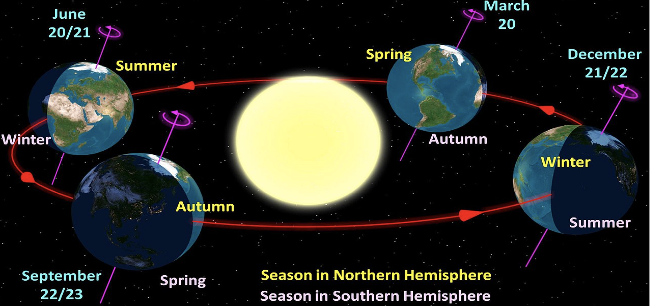By Priyanka Singh
Thank you, Amey, for such an interesting question! To answer this question, let’s first understand the need for a calendar. It has only one basic requirement – to not let seasons drift through the years and to expect them at the same time as last year. Now, we know that the position of the earth in its orbit around the sun determines the seasons. We also know that the earth takes 365.2422 days to complete one orbit around the sun.
To formulate a calendar, the astronomers had to account the fractional .2422 day because if it would not be accounted for, the seasons would start to drift slowly. We add 1 day every 4 years to adjust this balance.
- Let me take you back thousands of years, to 753 BC, when Romulus founded Rome. The calendar they adopted at the time had 10 months. Their year started in March and ended in December. Winter months (January and February) did not exist, and were nameless, dateless, and were not documented. There were 304 days in a year and that certainly was a problem. They would wait for their astronomers to announce the start of the next year by estimating the position of the sun.
- Numa Pompilius, the second king of Rome, modified the calendar and added two months after December to account for the missing 61 days. One interesting fact that contributed majorly to February having 28 days was that Numa Pompilius was a superstitious man. Romans believed that even numbers were unlucky and odd numbers were lucky. If you look at the Numa Calendar, you will find that the months either have 29 or 31 days. Now, anyone with basic mathematics knowledge would know that if we add odd number even times, we get an even number. So, the Romans had to make one month unlucky. Poor February was the last month of the year (Their year started from March) and that is why this burden befell on it.
- With time, new rulers came and made significant changes in the calendar to bring the balance of .2422 days as close as possible. After Julius Caesar and Augustus Caesar’s modification in the calendar (see box) the balance was brought to as close as 365.25 days per year. But even this difference was significant in the long run. The difference of unaccounted 0.0078 days per year comes to 1 day every 128 years. By 1500s this had brought in a difference of 10 days. This made the holidays and seasons noticeably misaligned.
- In 1582, Pope Gregory XII declared that the 10 misaligned days be stricken off the calendar. He also emphasized that the century years (that ending in 00s) which are not divisible by 400 cannot be made leap year. This meant that every 400 years we would be left with 3 fewer days.


